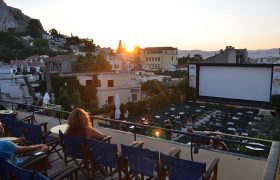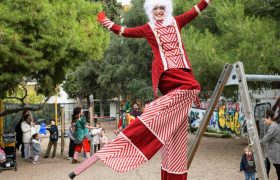Stroll through Athenian streets named after Philhellenes
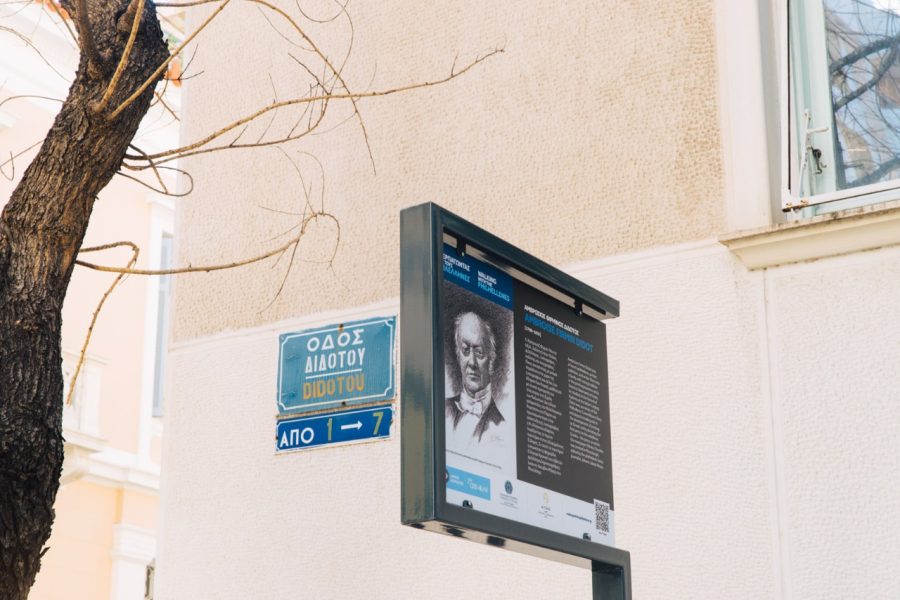
Didotou, which houses the French Archaelogical School, named after Ambroise Firmin-Didot, pioneer in typesetting and publisher of 'Bibliotheque des auteurs Grecs.'
They risked life and limb and month-long journeys to espouse their love for Greece – and a grateful nation honoured them by naming streets and squares after them. Did you know that the bustling Kaningos Square is in fact named after philhellene George Canning or that Lo Street is in fact named after Edward Law? Walking with the Philhellenes, a project by the City of Athens and Elliniki Etairia, offers an interesting insight into the lives of these fascinating personalities and a quick lesson in the city’s history.
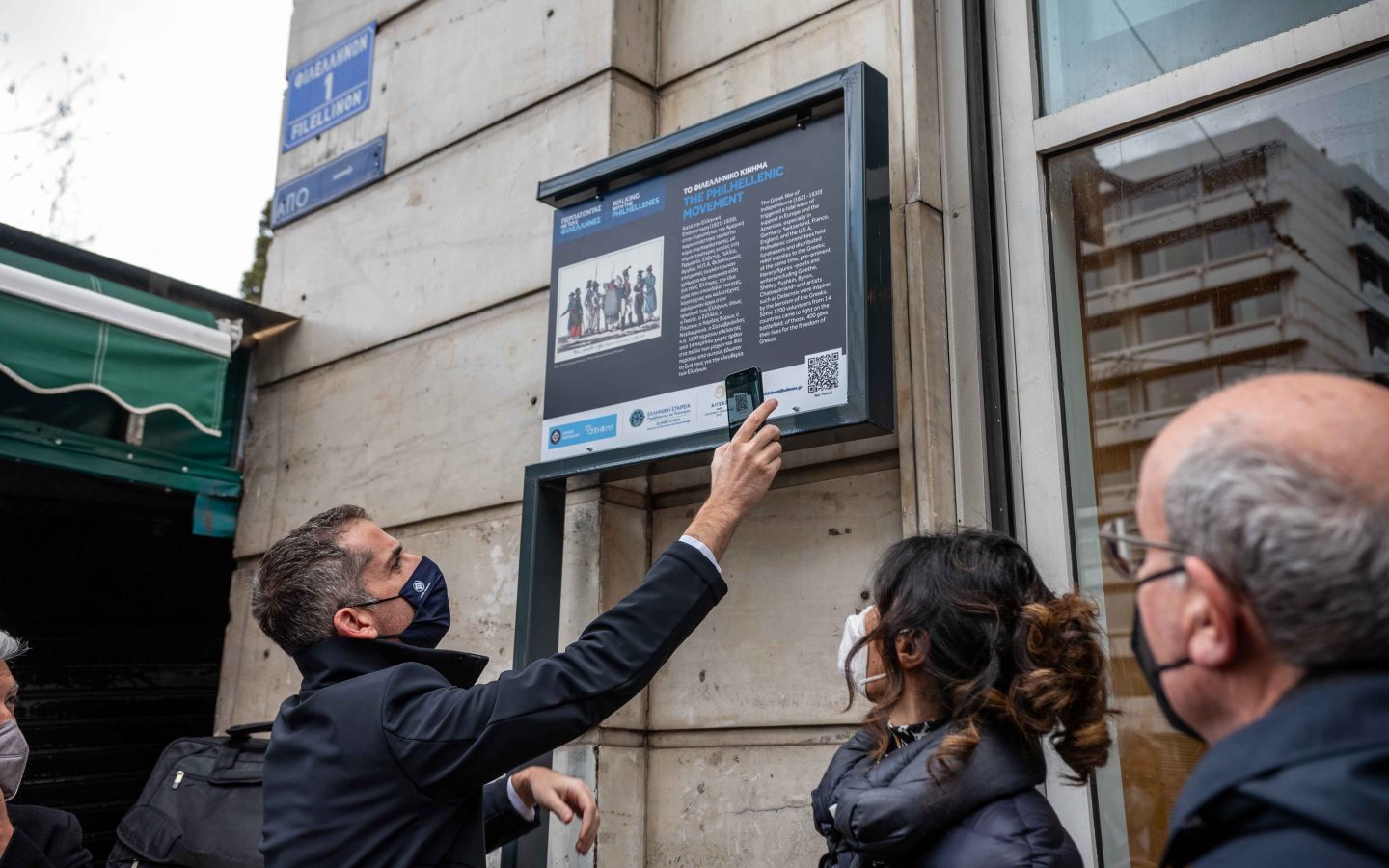
Mayor Kostas Bakoyiannis at the launch of the smart street signs on February 2. Image by Thomas Gravanis
Walking with the Philhellenes, a project by ELLINIKI ETAIRIA and the City of Athens, showcases streets named after foreign freedom fighters who used the power of their words and their influence to secure Greece’s independence from centuries of Ottoman rule, through 62 new information boards .
The Greek War of Independence (1821-1830) stirred up an unprecedented wave of support amongst Europeans and Americans. Since the Renaissance, the Europeans admired and culturally identified with the Graeco-Roman past and were thus prepared to defend the descendants of ancient Greeks in their fight for freedom against “barbarian” Ottomans – just like their ancestors against Persians at Thermopylae and Marathon.
The philhellenic movement flourished in a number of German states and France, Great Britain, Italy, Switzerland, the U.S.A., as well as Scandinavia – as far as India, a British colony at the time. In these countries, philhellenic committees were set up to collect money, and send medical and food supplies for the benefit of the Greeks; they also published philhellenic articles in the press and helped hundreds of volunteers who wanted to join the war to travel to Marseilles and Livorno and from there to the Peloponnese, Hydra, or Missolonghi. About 1,200 young men from Germany, mainly, but also from France, Italy, Switzerland, Britain, the United States, Netherlands, as well as from Poland, Hungary, Scandinavia, Spain, and Portugal, came to fight on the Greek side. Some four hundred of them died in battle or from disease. Prominent authors and poets, such as Shelley, Byron, Pushkin, Goethe, Chateaubriand wrote fiery poems and works of literature inspired by the Greek cause; painters such as Delacroix painted heart-rending depictions of their heroic deeds; sculptors, music composers, actors, and directors produced works inspired by the Greek struggle, causing the wave of support for the Greeks to swell.
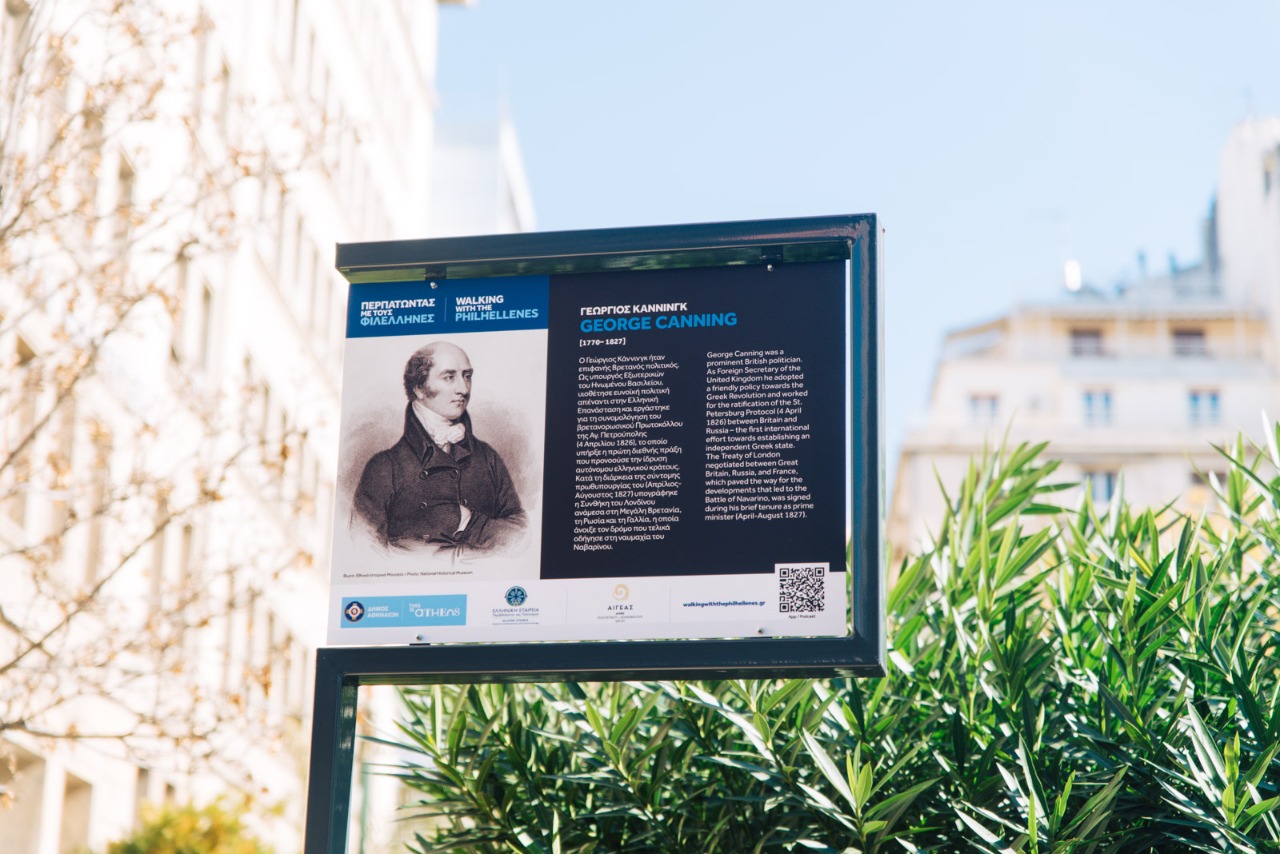
British Philhellene George Canning, after whom Kaningos square is named. Image by Thomas Gravanis
The philhellenic movement was pivotal in the successful outcome of the Greek struggle and the establishment of Greece, in February 1830, as the first independent nation state in the Eastern Mediterranean. Later efforts by Greeks in other territories to unite their homelands with the motherland, including the Cretan Revolution in the second half of the nineteenth century, attracted the interest and support of a number of philhellenes but, of course, on a smaller scale than the Greek War of Independence in 1821 had. This fascination with the ancient Greek spirit was first felt in intellectual circles, soon to attract an ever-wider public. This fascination soon morphed into an interest in modern Greeks and sympathy for their cause. The cultural appeal of ancient Athens, transplanted to Alexandria, Egypt, where it gained new momentum, was enthusiastically adopted by the Romans and went on to flourish by amalgamating with Christianity, giving shape to the Byzantine civilisation.
The War of 1821 coincided with the emergence of nationalism around the world. European nations longed to turn their countries from monarchies to nation states, with liberal governments and egalitarian and, ultimately, democratic visions. In the Greek War of Independence, many European citizens saw hope for their own countries.
The signs mounted on the streets bearing the names of philhellenes offers a glimpse into the lives of these spirited supporters who came from far-flung lands to advocate their love for the idea of Greece.
www.ellet.gr


